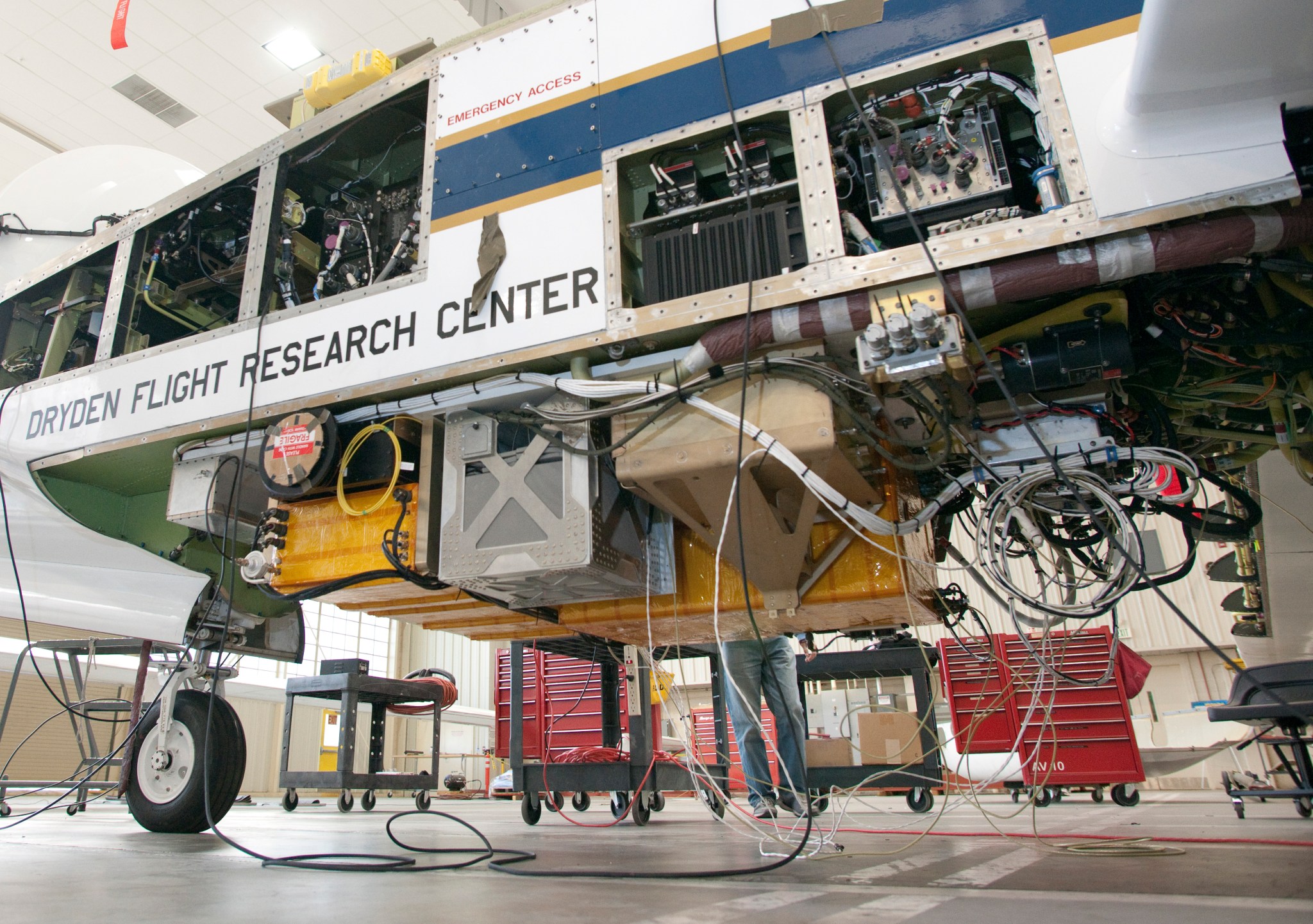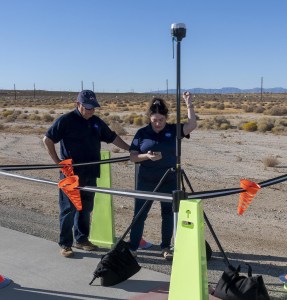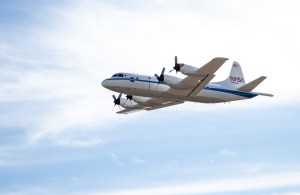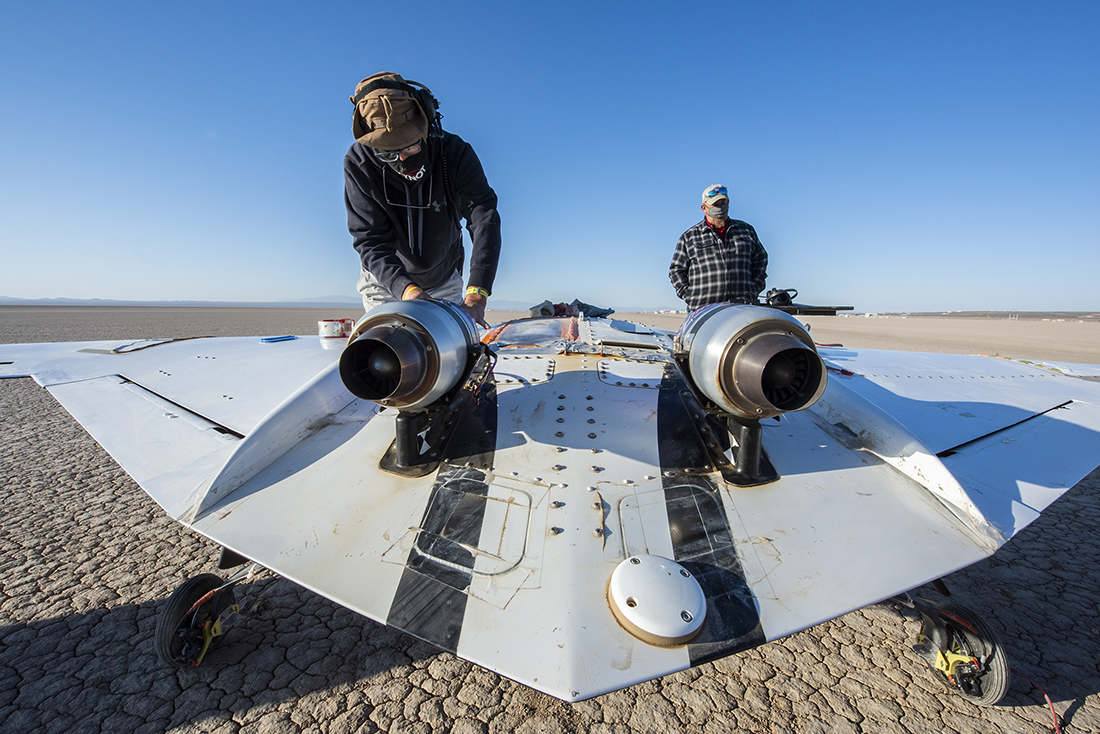
The Sensors and Systems Development branch is part of the Research and Engineering Directorate at NASA’s Armstrong Flight Research Center in Edwards, California. The branch consists of two focused groups: Research Avionic Systems Development and Sensor and Technology Research and Development. The branch is responsible for the mission avionic systems development for flight and/or ground tests (in hardware and software areas), new technology, and new sensing technique research and development. This talented engineering staff has profound experience and expertise in designing, developing, and programming for research mission/aircraft systems, including selecting, fabricating, qualifying, integrating, installing, and testing flight-worthy hardware. The branch works closely with Armstrong’s Vehicle Integration and Instrumentation branch to integrate developed systems onto aircraft to serve flight projects’ purposes. Through systems engineering roles and responsibilities, branch personnel also support science campaigns on platforms like the C-20A Uninhabited Aerial Vehicle Synthetic Aperture Radar (UAVSAR) and aeronautics research projects like supersonic schlieren imaging, autonomy, electric propulsion, and many others.
Mission Avionic Systems
- New flight and ground test’s specialized systems per mission requirements
- New real-time embedded systems for aeronautic research and science mission
- Small prototype hardware and software development to support new technology research
- Cockpit display development
- Autopilot command and control system development
- High-performance embedded systems
- Augmenting existing aircraft avionic systems or mission systems for different research objectives
- Power systems design and development
- Software coding including flight/mission critical software.
- Printed Circuit Board (PCB) design
Technology Research
- Electric Propulsion (Airvolt, LEAPTech, HEIST, CEPT)
- Fiber Optic Sensing System (FOSS, HyFOSS, cFOSS, CryoFOSS)
- Autonomous Systems (EVAA, Traveler, etc.)
- Ground and Airborne Collision Avoidance (GCAS, ACAS)
- Schlieren imaging technique for supersonic aircraft
Sensing Techniques
- Fiber Optic Sensing System for strain, liquid level measurement (CryoFOSS), and temperature
- Flight vibration measurement systems
- Ground, Airborne, and Improved Collision Avoidance (GCAS, ACAS, iCAS)
- Schlieren imaging
Algorithm Development
- Optical Frequency Domain Reflectometry (OFDR) for FOSS
- Wavelength Division Multiplexing (WDM) for FOSS
- Adaptive Spatial Resolution using wavelets for FOSS
- Automatic Dependent Surveillance-Broadcast (ADS-B)-based Sense and Avoid
- Ground and Airborne Collision Avoidance System (GCAS, ACAS)
- Expandable Variable-Autonomy Architecture (EVAA)
- Geofence
- Weather avoidance
- Person and population avoidance
- Aircraft, ground, and obstacle avoidance
- Forced landing system
- Waypoint navigation
- Path determination
- Autonomous flight planning and request
- Autonomous maintenance logging and reporting
- Intent manager
- Stereo vision
- Vision navigation
Verification and Validation
- Supports Vehicle Integration and Instrumentation branch on verification and validation process/activity for flight
- Compliant with NASA-required processes for system development
Data Services
- Post-flight data mining with Omega Data Environment (ODE) and network centric publishing
- Omega data calibration systems (Decommutation systems) for airborne, ground, and lab use
- Network-centric OmegaNeXT systems – Next generation of Omega systems
Resources for Development
- Experienced engineering staff
- Full-flown System Development Laboratory (SDL)
- Well-equipped System Integration Laboratory (SIL)
- Aircraft accessibility
- Rapid prototyping tools and equipment
- Support from all other organizations



































